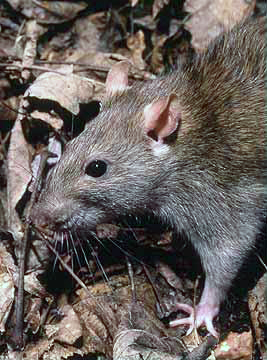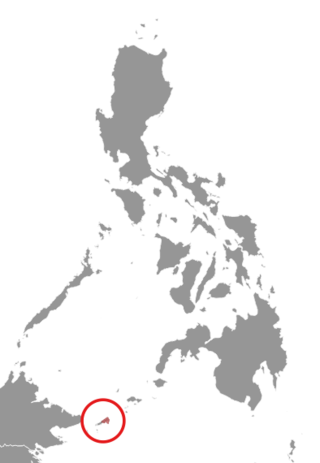
The black rat, also known as the roof rat, ship rat, or house rat, is a common long-tailed rodent of the stereotypical rat genus Rattus, in the subfamily Murinae. It likely originated in the Indian subcontinent, but is now found worldwide.

Rattus is a genus of muroid rodents, all typically called rats. However, the term rat can also be applied to rodent species outside of this genus.

The Polynesian rat, Pacific rat or little rat, known to the Māori as kiore, is the third most widespread species of rat in the world behind the brown rat and black rat. Contrary to its vernacular name, the Polynesian rat originated in Southeast Asia, and like its relatives has become widespread, migrating to most of Polynesia, including New Zealand, Easter Island, and Hawaii. It shares high adaptability with other rat species extending to many environments, from grasslands to forests. It is also closely associated with humans, who provide easy access to food. It has become a major pest in most areas of its distribution.

The bush rat or Australian bush rat is a small Australian nocturnal animal. It is an omnivore and one of the most common indigenous species of rat on the continent, found in many heathland areas of Victoria and New South Wales.

The Australian swamp rat, also known as the eastern swamp rat, is a species of rat native to the coasts of southern and eastern Australia.

The pale field rat is a small rat endemic to Australia. It is a nocturnal and herbivorous rodent that resides throughout the day in shallow burrows made in loose sand. Once widespread, its range has become greatly reduced and it is restricted to the grasslands, sedges, and cane-fields at the north and east of the continent. Its fur is an attractive yellow-brown colour, with grey or cream at the underside. This medium-sized rat has a tail shorter than its body.
The Sula rat is a species of rodent in the family Muridae. It is found only in Indonesia, on Taliabu and Mangole islands in the Sula Archipelago. On Sanana island, only the introduced Rattus tanezumi and Rattus exulans are found.

The Philippine forest rat is a species of rodent in the family Muridae. It is found only in the Philippines, and is located throughout the archipelago. The scientific name commemorates British colonial administrator and zoological collector Alfred Hart Everett. R. everetti is widespread throughout its range and feeds on a diet of worms and insects. There are no major threats to the species, which has been found to be competitively superior to introduced Rattus species.
Hoogerwerf's rat is a species of rodent in the family Muridae. It is named after zoologist Andries Hoogerwerf and is found only in western Sumatra, Indonesia, including Mount Leuser, where it is found only above 2000 m. It is known from few museum specimens. Genetic analysis indicate its closest relative is Rattus korinchi, another Sumatran mountain rat from which it diverged around 1.4 million years ago.
The Mentawai Archipelago rat is a species of rodent in the family Muridae. It is found only in the Mentawai Islands of Indonesia, on the islands of Siberut, Sipora, Pagai Utara, and Pagai Selatan.
The eastern rat is a species of rodent in the family Muridae.

The Himalayan field rat, sometimes known as the white-footed Indo-Chinese rat, is a species of rodent in the family Muridae. It has a wide range, being found in India, Bangladesh, Nepal, Bhutan, China, Myanmar, Laos, Thailand, and Vietnam, with introduced populations in Indonesia (widely), Palau, and the Philippines. A common species, the International Union for Conservation of Nature has assessed its conservation status as being of "least concern".
The dusky field rat, also known as the canefield rat, is a species of rodent in the family Muridae. It is found in Australia, Indonesia, and Papua New Guinea. In Australia it is found in northern Queensland and along the east coast as far south as Shoalwater Bay, where it is plentiful, and on South West Island in the Sir Edward Pellew Group off the Northern Territory, where it is considered a threatened species.
Stein's rat, also known as the small spiny rat, is a species of rodent in the family Muridae. It is found in West Papua, Indonesia and Papua New Guinea.

The Tawitawi forest rat or Tawitawi Island rat is a species of rodent in the family Muridae. It is found only in Tawi-Tawi, Philippines.

The Malayan field rat, Malaysian field rat or Malaysian wood rat, is a species of rodent in the family Muridae. It is nocturnal and mainly arboreal and is found in Malaysia, Thailand, Indonesia and the Philippines. It is a common species and the International Union for Conservation of Nature has assessed it as being of "least concern".
The Turkestan rat is a species of rodent in the family Muridae.
Serang virus(SERV) is a single-stranded, negative-sense, enveloped, novel RNA orthohantavirus.












